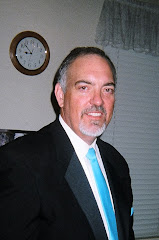I’ve mentioned Good to Great by Jim Collins in previous blog posts. I think it is one of the best books I have found for members of organizations that are interested in becoming excellent. Today, drawing on that book, I would like to write about the three questions that excellent organizations have to answer and the organizational strategy that should be derived by the answer to those questions.
The three questions are:
1) What are we passionate about?
2) What are/can we be the best at?
3) What drives our economic engine
What are we passionate about? This question points to the foundational motivation for outstanding or excellent organizations – they are passionate about what they do or they are passionate about what the organization accomplishes. We don’t often talk about passion, at least in for profit business settings. Collins notes, “…throughout the good-to-great companies, passion became a key [condition]. You can’t manufacture passion or “motivate” people to feel passionate. You can only discover what ignites your passion and the passion of those around you.”
What are/can we be the best at? Collins makes the point this may be different from an organization’s core competencies. He states that for an organization to truly be excellent they need to identify the thing(s) they can do that are the best in the world. Expanding on this point, Collins writes, “The good-to-great companies understood that doing what you are good at will only make you good; focusing on what you can potentially do better than any other organization is the only path to greatness.”
What drives our economic engine? To answer this question fully is to know more than “how do we make money?” Developing an understanding of the driver of an economic engine is to discover the key financial ratio that determines financial success and profitability; this is usually expressed as some form of money/variable. Collins provides a guide to help us determine our most meaningful economic ratio: “If you could pick one and only one ratio – profit per x (or in the social sector cash flow per x) – to systematically increase over time, what x would have the greatest and most sustainable impact on your economic engine?” He further states, “That denominator can be quite subtle, sometimes even unobvious. The key is to use the question of the denominator to gain understanding into your economic model.” Typically, this might be expressed in such things as profit per customer, revenue per hour, or profit per unit sold. The key is to spend the time to figure out what is the most important ratio for your organization.
These three questions are envisioned as intersecting circles. The area of overlap (where what we are or can be best in the world at, our economic driver, and our passion intersect) is where we should focus our strategic energy. I won’t go into why this term is used (I guess you’ll just have to read the book :-)), but Collins calls this intersection the “Hedgehog Concept”, which he defines as “a simple, crystalline concept that flows from deep understanding about he intersection of the…three circles.” A clear understanding of, and focusing efforts on, their “hedgehog” was the fundamental differentiator between good and great companies; one could say of excellent organizations.
While this may sound simple, Collins makes the point that actually determining an organization’s hedgehog is an iterative process that times; on average, the companies in his research took four years to identify and focus their efforts and resources on these key drivers of success. However, if it can move an organization to greatness, it is worth the effort.
One of the things I like about this concept is that it is applicable to us as individuals as well as to organizations. Imagine the joy that would accompany spending your life on doing something that you were passionate about, something at which you were or could become the best in the world, and something that brought you ample economic rewards. How many of us can truly say we have all three of these variables fully met in our current work? How would life be different if we spent our time in the intersection of these three circles?
In a conversation recently, a friend of mine made the point that when an organization’s hedgehog and the hedgehogs of the organization’s members are the same, tremendous power, energy, creativity and ultimately success is unleashed. This statement points to the need for leaders to guide their organizations through the process of identifying the organizational hedgehog, and at the same time uncovering their own, and helping organizational members discover their hedgehogs. Ideally, those hedgehogs will be the same, or very similar. If there is not close alignment, particularly for key organizational members, one has to wonder whether that organization will ever truly be able to be excellent and whether its members will ever be happy and fulfilled working there.
How’s your organization’s hedgehog? Have you identified it? Do you know your passions, what you are the best in the world at, your economic drivers? Is your organization acting accordingly? How’s your personal hedgehog? Thinking deeply about these questions and taking action as appropriate can lead to organizational excellence and personal satisfaction.
Punto Banco Baccarat Betting Limits Review
2 weeks ago




No comments:
Post a Comment